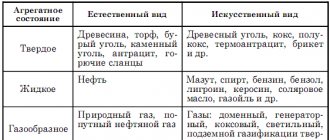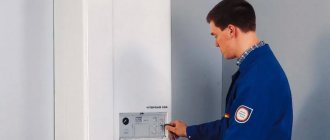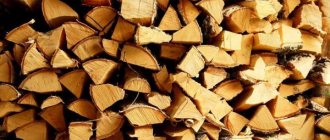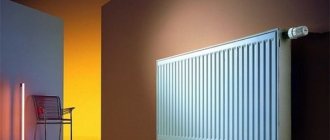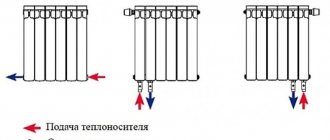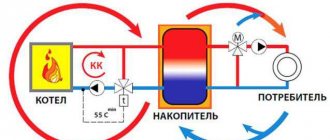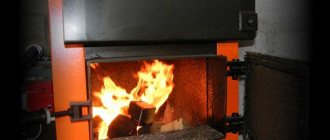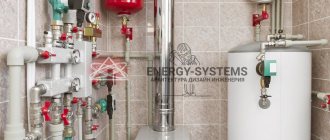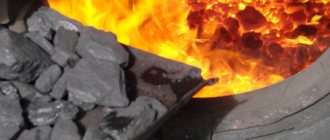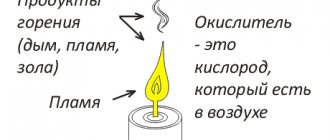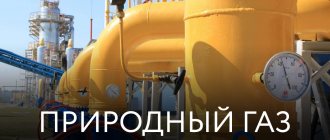Coal heating boiler with automatic fuel supply - device, review of fashionable models
The problem of organizing automatic supply of solid fuel has always worried the developers of solid fuel boilers. If in the case of firewood it is difficult to organize it, then when using coal and pressed fuel pellets the situation looks more real. Now in our review we will look at some of the most popular coal machines, and how they implement a mechanism for delivering fuel to the combustion area.
Automatic feeding of pressed fuel pellets is often performed using a soft or hard screw. Coal can be delivered to the combustion chamber by a screw conveyor only if its fractions are sufficiently small in size and homogeneous, but this is almost always not the case. Today we will look at several coal heating devices, in which the automatic fuel supply mechanism from the bunker to the firebox is implemented in different ways.
Tray burners
Tray burners are a tray made of steel or cast iron into which an auger supplies fuel.
The main advantage of tray burners is their omnivorous nature. The burner burns most types of fuel and fuel mixtures available on the market. Fuel is supplied to the hearth only in a horizontal direction and over a shorter distance compared to a retort burner. The resistance of the feeder during operation of the auger in this case is minimal. At the same time, the short distance of fuel movement and horizontal supply increase the likelihood of fuel backfiring towards the fuel bunker. Therefore, for such structures, additional protection against backfire (fire extinguishing group) is organized.
Another disadvantage is the sensitivity to the formation of sintered substances and deposits in the burner. Deposits accumulate at the end of the burner tray and are more difficult to remove automatically - they will only be removed when the next portion of fuel is fed into the burner.
Automatic boiler "Yamal" long burning
Anyone who has heated their own home with coal knows about the main problem with this fuel, which prevents it from organizing its automatic supply to the high-pressure boiler. In most cases, its fractions differ in size, hence the automation of supply in the form in which it is implemented, for example, in pellet boilers, becomes impossible. Manufacturers of the Yamal coal machine have solved this problem by using an absolutely modern feeding method that can work perfectly even with fractions of various sizes.
Photo 1: Domestic coal-fired heating boiler "Yamal" with automatic feed
The meaning of this method, like everything talented, is not complicated. In the middle of the bunker with inclined walls there is a conveyor that picks up pieces of coal and raises them higher and higher. At the highest point there is a gear crusher, which passes fractions of suitable size, and those that are larger either prick against its teeth or fall back into the hopper. As you can see, the mechanism does not have complex structures, and even if it fails, everyone can adjust its operation with their own hands.
Photo 2: Automatic loading of coal into the combustion chamber of the Yamal boiler
The operation of the Yamal boiler is fully automated. Fuel supply, ignition, slag discharge, power adjustment - all these processes occur automatically under the supervision of an electronic control unit. When the fuel bunker is completely filled and the diesel burner is charged, a coal heating boiler can heat the room itself for 20 days.
The production company produces three Yamal models of varying power. Their key technical data is shown below:
Electronics defects
In the boiler room, in addition to the boiler itself, auxiliary equipment is installed that controls the operation of the system: circulation pumps and hot water pumps, valves and distribution manifolds, safety group electronics. Random errors in the operation of equipment lead to malfunctions of the boiler controller. Factory malfunctions of the equipment are also possible - the manufacturer accepts it as acceptable if for every 1000 products 30-50 controllers work with errors after launch.
When connecting devices, surprises also happen: a short circuit of the triac - transistor of the fuel supply system or fan motor causes continuous operation of the feeder (auger) or fan. If the fan or auger is constantly running, the boiler controller generates an error signal and turns off.
Even if connected incorrectly, it is possible to damage the connector that connects the pump power to the controller. This is unpleasant, but not fatal: in this case, the pump is connected directly to the outlet.
Sometimes a boiler is purchased in advance, and then it waits in the boiler room for installation. The boiler is tightly closed with a bag or film: when temperature changes, condensation forms, including on the controller elements, which then fail. If you purchase the boiler in advance, prepare a suitable storage place - dry and warm with free access of air to the controller.
Varieties
When the question arises about choosing suitable heating equipment for a home using solid fuel, the following decisive points are taken into account: the combustion method, the material of manufacture and the method of supplying coal.
All units operate on solid coal.
Type of combustion
Thus, direct and long-burning boilers are distinguished. Direct or bottom-up combustion is based on the principle of air circulation from the part located below the firebox. In this case, the fuel begins to burn from below. In the case of long burning, the fuel is burned from above.
The direct combustion mechanism is quite simple: the boiler is ignited and coal is manually fed into the chamber. Combustion air enters through the holes (grids) from below - this helps the fire to cover the lower layers of coal well and move it upward. In a long-burning unit, the fuel is placed in a chamber and only then the top layer is ignited. Air is supplied from above through a specialized system.
This combustion method is economical and requires several times less load than in the case of direct combustion.
However, units that run on coal are very demanding on the quality of the fuel: it must be dry and low-caking, and can only be refueled when the first part has burned out.
Classification by material
Coal-fired boilers can be made from specialized boiler steel and cast iron. Steel is not resistant to corrosion and burns out faster, but its ability to be repaired has become a positive quality of systems made from this material.
Cast iron, on the other hand, has an impressive service life and resists corrosion, but is also very brittle. This makes it very difficult to repair cast iron boilers and requires replacement of leaky parts. Due to this, sometimes these materials are combined during manufacturing. For example, the body is made of steel, and the combustion chamber is made of cast iron.
Classification by feeding method
Boilers are divided into units with traditional, semi-automatic and automatic fuel supply. Traditional feeding is a manual insertion into the chamber, which requires the constant presence of the client to maintain the required temperature. These units are cheap, but the huge consumption of material and the short time of its smoldering provide a small benefit.
Semi-automatic boilers are equipped with processors and a fan. All this gives an increase in operating time on one load with the release of the required amount of heat.
Coal vending machines are equipped with a microprocessor fan control system and automatic shutdown sensors when the water temperature is exceeded. Control sensors, fire protection valve control, and thermal converters are also installed there.
When a signal is received from the thermal converter, the fuel is automatically filled with water - this eliminates the risk of a fire. Fuel consumption is reduced to 50%, which in turn reduces the formation of ash by almost 3 times. Thanks to this, despite the high cost, these boilers are very economical and reliable in operation, and will fully justify the investment.
DeOnis-I › Blog › Homemade mine boiler for all types of fuel
In the process of transforming the dacha into a country cottage, the need for high-quality heating arose.
Gas runs along the perimeter of SNT and will be connected later, but for now there is no money for this. You will have to heat with wood, coal and pellets. Another task for the boiler is the disposal of combustible waste. First, wood scraps and then household scraps. The boiler is planned to be installed in a separate boiler room located on the site. So to speak, “household block”.
I surfed the forums and realized that the most effective is a mine boiler with afterburning. The main advantage is the automatic gravity supply of coal into the combustion chamber. After considering various options, I settled on Cooper Carbo, but not everything went smoothly for him either. If you fill it with coal, then you won’t be able to put the garbage in, and it’s still somewhat unclear what to do if the boiler goes out and it’s full of coal... How to relight it, shake it out, light it, and fill it with coal again?
I had to think about my cauldron with blackjack and I send****... Perhaps, of course, I won’t collect it, but the task is interesting and why not train my brain.
The side walls are planned to be double so that the volume of liquid is maximum. And you don’t want the walls of the boiler to be too hot. Plus, if something happens, the boiler will flood with coolant. Hot water in the house is supplied through a heat accumulator - a boiler.
Air supply through a throttle for installing an automation drive.
The second choke is planned on the side of the boiler to supply additional air for afterburning.
Garbage is loaded on top of the coals, this will allow the most complete decomposition of harmful substances.
I think I’ll draw a boiler and order the sheets to be cut at a company and weld it myself.
This is the first draft for now. I'm thinking about assembling coolant-washed pipes in the heat exchanger shafts.
An idea arose to assemble heat exchangers on pipes. This assembly technology will avoid both sharp corners and eliminate welding inside the shaft.
The ends of the pipes are welded into the walls and open into the coolant jacket.
All parts of the boiler, with the exception of dampers, ash pan grates and two ash storage boxes, cannot heat up above the coolant temperature.
In the future, I plan to introduce a liquid fuel or gas burner into the boiler to ignite the boiler automatically.
Source
Working principle
The automated type coal heating system uses the working principle of a conveyor. The heating material penetrates the conveyor belt and is fed into the chamber. How the movement mechanism works depends on the temperature of the water in the system. The temperature is recorded by a sensor and transmitted to the microprocessor control unit.
When the temperature drops, the conveyor belt begins its own movement, and fuel is supplied to the chamber. Ash removal is also considered an automatic process.
Models for industrial enterprises can work independently for a month, while domestic boilers have small bunkers and can only work on their own for 2-3 days.
Broken pin (shear bolt): causes.
A common reason for the boiler to stop working is the pin (shear bolt) that connects the engine to the auger breaks. Below are possible reasons for this failure:
- Fuel of non-recommended fraction
- Foreign bodies in fuel (bolt, stone, pieces of wire)
- Deposits (carbon deposits) in a retort-type burner - carbon deposits reduce the diameter of the channel for fuel supply to the burner and increase the resistance of the screw. The problem is easily identified: when carbon deposits are deposited on the retort elbow, the “crunching” sound when fuel is supplied to the burner becomes louder. Once a year, before the start of the heating season, clean the fuel supply elbow to the burner. If the boiler runs on pellets, it is better to repeat the procedure during the season - when using pellets, carbon deposits form faster.
- Damage to the auger. Over time, the auger turns wear out mechanically or are destroyed by sulfur contained in the fuel. In places of wear, the auger does not move fuel but grinds it. Sawdust or coal chips accumulate in the feed tube, increasing the resistance of the auger. The wear rate of the auger depends on the humidity of the fuel used, the sulfur content in the fuel and the location of the boiler room (in a damp basement and without ventilation, the service life of the equipment is reduced).
- Incorrect installation of the boiler (the adjustable foot of the fuel tank is used to adjust the height and leveling of the boiler supply system).
| IMPORTANT! When transporting the boiler, do not lift the structure by the screw feeder pipe: if the load is distributed incorrectly, the pipe is deformed and the geometry of the feed system is disrupted. The result: additional noise when the auger rotates, its premature wear and constant pin failures. |
The working process
So, the process of heat supply using an automatic boiler and coal as fuel consists of several stages:
- coal is poured into the bunker manually. The number of bookmarks and the time of continuous operation of the system depend on the capacity of the bunker;
- The auger feeds fuel into the chamber automatically. The gearbox does not stop working from the electric motor;
- fuel is squeezed into the chamber and air is supplied under pressure;
- combustion occurs in thin layers, reducing the amount of soot and unburned particles, but if necessary, the boiler will automatically remove ash.
Retort burners
Retort burners consist of a cast iron elbow (retort) and a cast iron grate burner in which the fuel burns. Some burners are equipped with a "ring gear" whose rotation stirs the fuel, breaks down the coking slag, and distributes the fuel throughout the retort tray.
Thanks to the 90-degree bend, the burner is installed in the middle of the combustion chamber, so the side walls of the boiler are heated evenly and do not overheat. The design increases the path to the fuel hopper and reduces the likelihood of fuel fire in the feeder.
Another advantage is low sensitivity to deposits arising in the hearth itself: incoming portions of fresh fuel automatically dump unburnt or sintered fuel into the boiler ash pan.
There is also a downside - bending the knee complicates the supply and combustion of fuel, which eventually settles at the bend. Sediment and carbon deposits build up, reducing the "throat" for fuel movement on its way to the top of the burner. This results in increased resistance of the auger feeder, premature wear of the auger and breakage of the pin (shear bolt) protecting the auger feeder.
How to choose?
When choosing, you need to look at the following points:
- fraction of the coal used - less demanding equipment that works on fractions up to 80 mm;
- possibility of using different types of fuel;
- dimensions, volume and rated power of the tank;
- voltage of the electric motor - for the home it is best to use systems operating on a voltage of 220 volts;
- System efficiency - for industrial equipment it is up to 81% with simultaneous heating of areas up to 3500 m2.
Video
Additional recommendations for choosing the appropriate model are available in the video.
Evgeniy Afanasyev chief editor
Author of publication December 27, 2018
Did you like the article? Save so you don't lose!
The most modern and cost-effective are automatic solid fuel boilers. This, of course, affects the initial price of such devices, but ultimately leads to the desired economic and operational result.
The purpose of automatic solid fuel boilers is: maximum autonomy (independence) of operation with the lowest possible fuel consumption. And here everything is natural: the more responsibilities are transferred to automatic control, the more accurately and consistently each of its nodes works. Which ultimately translates into savings in fuel and maintenance time, as well as a general reduction in labor costs when it comes to maintenance personnel.
Application
This kind of equipment is very often used for heating a private home. It is installed in a special way into the system, fulfilling a number of conditions:
- the area of the room with the heat-generating installation must be more than seven meters2, and all living areas of the house must be supplied with air flow;
- floor coverings at home must be non-flammable;
- the boiler should be placed at a distance of 0.5 meters from the walls with a heat generating unit, and a sheet of metal should be placed under it, which will also protect against fire;
- chimneys must contain the required cross-sectional diameter in accordance with the manufacturer's advice;
- It is better to insulate the electric motor and automation systems from any heat.
Likewise, coal boilers are considered an excellent replacement for established heating systems in a private home.
Service
Maintenance of automatic solid fuel boilers as standard comes down to periodically reloading the fuel hopper, removing the resulting ash from the ash pan, and cleaning the heat exchanger. And depending on the model and power of the boiler, it is performed on average 1-3 times a week.
In an extended modification, some boilers can be equipped with bunkers of increased volume or automatic additional fuel loading systems, an automatic ash removal system, as well as a pneumatic cleaning system for the heat exchanger.
How do automatic coal boilers work?
Independent coal-fired heat generators that operate automatically differ from traditional versions in that all operating processes are fully regulated by the controller. To support combustion, an automatic feed mechanism with a fuel feed screw, a system of forced air injection and removal of combustion products are used. The design also provides a self-cleaning function.
The working principle is as follows:
- After turning on the boiler, the automatic auger feed of coal into the boiler starts. The first part of the fuel is ignited using electric plasma. As it burns, a new part of the coal is fed into the combustion chamber. If you need to increase the heating intensity, the speed of the screw conveyor increases. After reaching a specific temperature, the fuel supply stops.
- Together with the screw transmission, the air supply to the combustion chamber is turned on. The controller monitors the rate of entry of air masses, which affects the combustion intensity.
- Automated grate bars are installed in the combustion chamber. As the coal burns, the ash and non-combustible residue are dumped into the ash box. The grate is turned over, the ash falls down, directly onto another auger, with the help of which the combustion products are removed. The self-cleaning system also runs under broken smoke ducts. The soot remaining on the walls is cleaned by specialized springs placed in the middle of the channels and poured onto the screw transmission of the self-cleaning system. All gaseous, liquid and solid substances from the combustion chamber and smoke channel go into the ash box.
- Provide ideal conditions for complete combustion of fuel with very little waste.
- Ensure the maintenance of the fire torch for the greatest heat transfer.
- Prevent high coal consumption by optimizing portioned fuel supply.
- Automatic coal crusher - burner device and screw conveyor, designed for fuel consumption of a specific fraction (up to 25 mm). The rock is poured into a specialized heir, with an installed coal crusher. After crushing, the fuel penetrates into a moving conveyor.
- Coal breaker - a specialized device is installed in the bunker that prevents the stored coal from clumping into lumps, which ensures an equal supply of the fraction to the auger and prevents it from jamming.
- The feed gear motor drives the conveyor and drives the electric auger drive. It all depends on the model; the power consumption required for operation is 130-180 W. The electric drive is connected to the automation, turned on and off according to a signal from the controller.
- Fuel storage – solid fuel automated coal boilers with a bunker, there are several types. The first are connected to a mechanized, free-standing storage facility. The advantage of such a solution is the virtually complete absence of permanent contraindications in the independent operation of heating equipment. The storage capacity is sufficient for the boiler to operate non-stop throughout the entire heating period. Automated coal heating boilers with a built-in bunker do not require modification of a separate room for mechanized storage. The capacity of the fuel tank in a bunker coal boiler is enough for 3-7 days.
- Batch drum - the screw transmission does not feed coal directly to the burner, as is the case with pellet equipment. To begin with, part of the fuel is loaded into a specialized portion drum. After a signal is given from the controller, the drum begins to rotate. Some of the fuel is poured onto the burner in a thin, even layer. After the coal burns out, the automation gives a secondary signal and the process repeats.
The microprocessor controller is considered the “heart and brain” of a coal-fired boiler. But, uninterrupted operation also depends on certain components of the system. A significant role is played by the coal burner and the coal dispenser bunker.
Working principle of coal burner
An automatic coal boiler could not work perfectly without a special burner device. Fuel combustion occurs in portions. The design has a system of electric ignition and forced air supply.
The main tasks of the burner are as follows:
In practical terms, this means that the burner device is closely connected with the coal supply mechanism, smoke exhauster, blower fans and controller. All devices work as a single unit, which ensures the achievement of tasks.
Manufacturers use two burner options, depending on what kind of coal is used for boilers with automatic feeding:
- Retort burner - necessary for burning coal, Eco-peas, without the presence of coal, small particles of rock (coal fines). The ideal fuel fraction is 5-25 mm.
AKM burner device - it is allowed to burn coal with a high content of coal, up to 60%. Fraction sizes are 5-25 mm.
To automate the fuel supply to a coal heating boiler, a microprocessor controller is used, in fact, it is a mini computer. An optical meter is installed on the burner to monitor the presence of a flame. When it fades, a signal is given for secondary ignition.
The controller is connected to several room external water thermostats for automated boiler control. The heating temperature of the coolant changes depending on the readings of the sensors. The newest models use weather-dependent automation, which makes it possible to change the boiler settings, taking into account the air temperature.
The coal enters the burner in a precisely measured portion and then burns. A signal is sent from the burner device to the controller, which starts the movement of the fuel conveyor. A new portion of coal enters the burner and the fans turn on. The high efficiency of the boiler, amounting to 87%, depends on the coordination of actions.
Coal metering hopper design
The system for automatically supplying coal to the boiler is another important link that ensures the operation of the automated station. A screw or piston fuel transmission connects the fuel storage and burner device. Automatic coal heating devices with a loading hopper are connected to free-standing or built-in storage of various sizes.
The loading hopper is designed as a metal storage facility with a screw conveyor installed below. The design has several main components that prevent coal from jamming in the auger and caking of the fuel.
To automate the supply of coal to the boiler, the following key components are used:
Automated solid fuel boilers with a built-in coal tank are installed within a couple of hours. To install a mechanized storage facility, it may take a couple of days. The bunker is installed using specialized connectors provided in the design. The fuel storage is installed on the side or on top of the boiler.
What to do to avoid fire?
- Ensure constant boiler draft, hermetically seal the fuel tank and monitor the condition of the fuel tank lid gasket.
- Check the cleanliness of the channel and the air mixer chamber: dust or ash enters the mixing chamber through the blowing nozzles and over time clogs the air supply channel of the fan - as a result, the fuel burns unevenly and the efficiency of the boiler decreases.
- Adjust the fuel supply parameters; if the supply speed is slower than necessary and the air supply to the burner is incorrectly configured, more intense fuel combustion occurs. The result is that combustion begins to move down the burner and goes into the fuel supply pipe.
- The burner metal also heats up and heats the feed tube, resulting in a false alarm indicating reverse heat flow. To avoid false alarms, install a special non-flammable gasket separating the burner and the pipe - the gasket will not allow the temperature of the heated burner to be transferred to the feeder pipe.
What coal is suitable for automatic boilers?
The loading system into the boiler is designed for the use of a specific fuel fraction. Most conveyors are capable of moving coal with a fraction of up to 50 mm. Manufacturers do not recommend using large coal, since during the combustion process a considerable amount of ash and non-combustible residue remains.
The main requirements for fuel quality for all water heating solid fuel heating boilers with a fully automatic coal supply system are:
- Eco-pea fuel grade.
- The optimal fraction size is from 5 to 25 mm.
- The number of small particles is no more than 60%.
Acceptably meets the above requirements, packed coal in bags. However, if purchasing ready-made fractional fuel does not make economic sense, it is allowed to use specialized crushers.
By passing coal through a crushing device, you can obtain a considerable amount of coal of a strictly established fraction. The downside of the solution is considered to be a considerable amount of dust and small particles. The resulting composition is burned only on an AKM type burner.
Smoke from the fuel tank.
There is a simple “at-home” way to check the quality of smoke removal from the boiler: open the boiler door - if adjusted correctly, smoke does not come out, even if all doors are open.
If exhaust gases (smoke) come out of the fuel tank, this is a sign of insufficient chimney draft. This happens when the boiler chimney or the incoming combustion air mixer is clogged. The second reason is incorrect boiler control settings or a simply unsuccessful boiler design.
Another note: when adding fuel to the firebox, make sure that the burner is at rest (the fan is turned off and does not create excess pressure in the boiler).
How to choose an automatic coal-fired boiler
Economical small home automatic coal boilers, with an efficiency of up to 90%, are recommended by a couple of dozen manufacturers. The models are distinguished by their performance, specific design and the presence of a hydraulic circuit for hot water supply.
The selection of a heating boiler is made based on the following thermal parameters:
- Degree of automation – modern bunker coal heating units, equipped with a microprocessor controller. If the client wishes, the heating equipment is equipped with a self-cleaning and remote control system. After the GSM module has been installed, the operation of the boiler is controlled using any mobile device. The new generation controller is capable of automatically supporting the operation of several heating circuits: radiator heating and “warm” floors.
- Fuel storage capacity - in most cases, the bunker is designed to ensure independent operation of the boiler for 3-7 days.
- Productivity - calculation is performed according to the formula 1 kW = 10 m?.
Particular attention is paid to the requirements for the automation of a remote control system for boiler operation. The remote control unit must connect to the Internet, have a stable radio signal and operate stably even with interference in the electrical network.
Additionally, the degree of insulation of the device is taken into account. When using coal in a boiler plant, there is a high probability of accumulation of combustible dust. Due to this, the control unit must have a protection degree of at least IP 26.
Famous Coal Bunker Boiler Manufacturers
In addition to choosing an installation based on technical specifications, choose a boiler based on the manufacturer. The consumer is offered equipment of various price segments.
Domestic-made boilers remain the most inexpensive. At the same time, the models have good build quality, reliability and a long service life.
European boilers are offered in the premium class. The models are distinguished by their high automation and practicality.
The more common ones are:
- German boilers – Roda, Buderus.
- Czech boilers – Metal-Fach.
- Turkish models – Termodinamik, Emtas.
- Polish boilers – Stalmark, Defro.
Nowadays, Russian boilers are quite in demand. The reason is the regularly improving product quality and reduced price when compared with foreign units. The main disadvantage is considered to be small flaws in the combustion process automation system.
It is necessary to pay attention to boilers ALTEP, TIS EKO, KAZ Kordi, etc.
Asian boilers operating on solid fuel are demonstrated in a small range of products. Attention is paid to Kentatsu models, which stand out for their operational capabilities, but are inferior in thermal properties and reliability to Russian and analogues from European countries.
Cost of automatic boilers on coal
Coal heating devices with automatic fuel supply are produced with a low operating capacity of 15 kW. Models from a Russian manufacturer, with a built-in bunker, cost approximately 160 thousand rubles.
European analogues are much more expensive, approximately several times. Boilers manufactured by Buderus and Roda cost 350-500 thousand rubles. Connecting heating equipment costs approximately 5-10% of the cost of the station.
Opinions about coal-fired boilers with automatic fuel supply
The initially wary opinion of consumers regarding automated coal equipment was gradually replaced by a high number of enthusiastic reviews on the Internet.
Despite the many good aspects: a long time of independent operation, a high degree of safety, economy and reliability, boilers have several real disadvantages:
- Dependence on electrical energy - operating a boiler without electricity is not possible. After turning off the voltage, the screw transmission, the system of forced injection and removal of combustion products stops. To ensure the operability of the boiler, the connection to the electrical network is made through a UPS and a stabilizer.
- Dust deposits - burning a coal combustion chamber has one serious drawback. During the combustion and fuel supply process, a considerable amount of very small dust accumulates. Under a number of circumstances, very small particles, having reached a specific concentration, can cause an explosion. Dust control when loading a bunker with coal includes the installation of specialized dust collectors. Constant wet cleaning will also be required.
Despite two significant disadvantages, coal-fired automated boilers are especially favored by our consumers, as evidenced by the constant demand for heating equipment of this type.
Review of the best manufacturers and prices
There are many models of heating units available to the modern consumer. Making a choice in such a situation is quite difficult. Understanding popular models and manufacturers will help simplify the situation.
Germany
German-made boiler equipment is the standard of quality. The models have a high level of efficiency and operate without failures. It is not surprising that systems manufactured in Germany have the highest cost, about 450–600 thousand rubles.
First of all, it makes sense to pay attention to the heating systems Buderos, Heiztechnik and ThermoFLUX.
Prices for solid fuel boilers Buderos
Italy
Among the Italian-made models there are many universal options. For example, Lamborghini Ecologik series boilers can operate on wood, coal, peat and briquettes. And after installing additional equipment (adapter door, pellet burner, auger and hopper), pellets will also be suitable as fuel.
Italian models have an average price category. Brands that have proven themselves in the market: Lamborghini, D'Alessandro Termomeccanica, Faci.
Prices for solid fuel boilers Lamborghini
Türkiye
Turkish boiler systems belong to the middle price segment. They have a good quality automatic feeding system and are equipped with a convenient control panel. One of the most popular manufacturers is Totem, which produces silent boilers with easy temperature control. The brands Emtas and Termodinamik are also known.
Russia
Russian automatic boilers are in constant demand on the domestic market. Manufacturers have achieved significant success through the introduction of modern design methods, new manufacturing technologies and continuous improvement of designs.
The models have an attractive appearance, high-quality assembly, good automation and benefit in terms of price. Their cost starts from 80–100 thousand rubles, which is relatively inexpensive compared to imported analogues. The most famous brands: Danko, Pereko, Obshchemmash Peresvet, Obshchemmash Valdai, NMK Magnum.
Japan
Japanese products are characterized by a high degree of automation. Many additional built-in functions significantly increase ease of use. The models are also distinguished by an ergonomic shape and high-quality materials for manufacturing, usually steel with anti-corrosion treatment.
